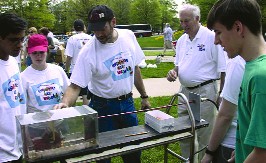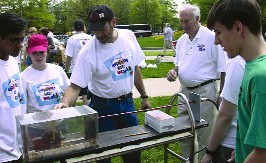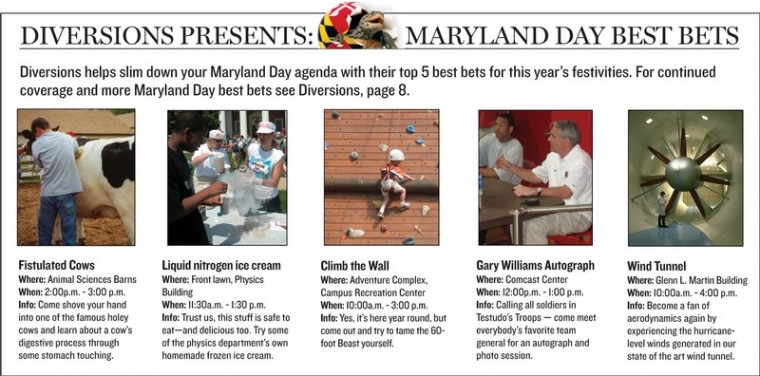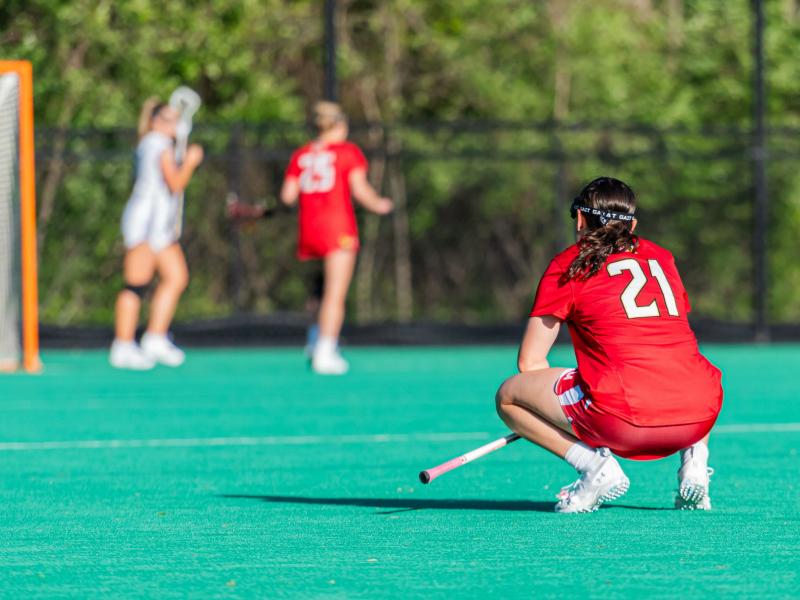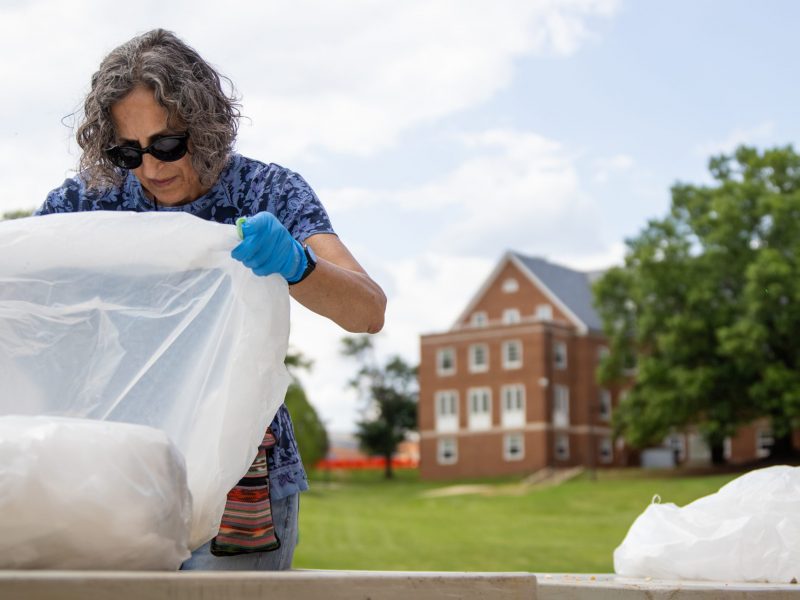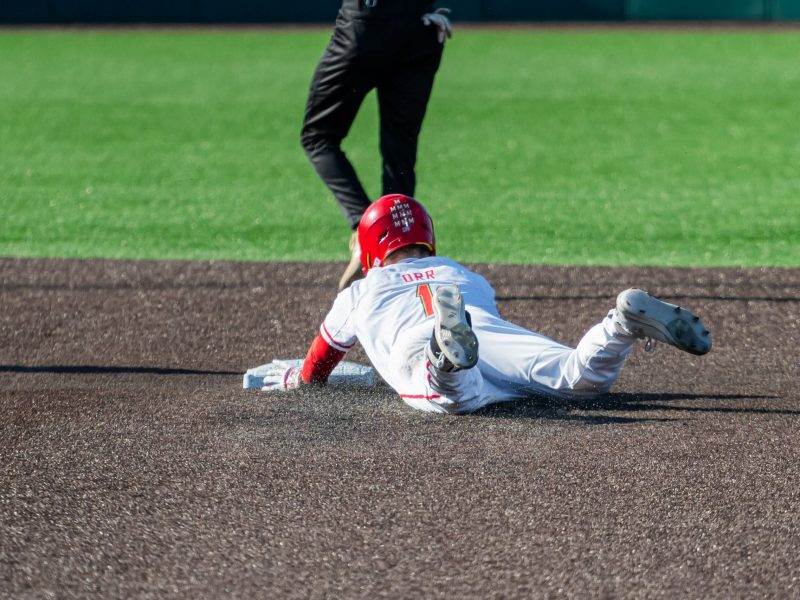When an incoming president from the University of California, Berkeley said in 1998 he wanted to start up a huge, university-wide open house for the community to see the campus, people thought he was crazy.
Seven years later, Dan Mote’s Maryland Day — a revamped version of Ag Day based on Berkeley’s “Cal Day” — is an established university tradition, growing larger and spawning copycats of its own.
“There was a general feeling that that was something we didn’t do,” Mote said. “I felt that was a big mistake. There was a lot of resistance and a lack of enthusiasm on this idea.”
Tomorrow’s event will feature more than 400 free activities from 10 a.m. to 4 p.m. across the campus in which children and adults of any age can jump on a moonbounce or get blown away in a wind tunnel. The event grew from 20,000 participants to more than 70,000 people last year, with the university continually trying to top the previous year’s attendance. This year will feature two hydrogen-powered Humvees (two of only three in the world), a Black Hawk helicopter with the Army ROTC and a Huey helicopter.
But the university also likes to stick with what works, what gives Maryland Day the unique feel of a carnival in the world of academia: munching on the Dairy’s ice cream, watching the digestive system of cows at the farm or experiencing the power of the Glenn L. Martin Wind Tunnel.
“The real goal of this is to, first of all, open up the whole campus from agriculture to athletics,” Mote said. “As a recruitment process for higher education in general and for the campus in particular, it’s very effective.”
Mote originally told administrators and staff he wanted 25,000 people to attend the open house. Some thought that was impossible.
“We looked at him like he was crazy,” said Terry Flannery, executive director of University Marketing and Communications. “I think people weren’t sure how the resources and time put in would benefit the university externally and internally; there were a lot of doubters.”
So Mote appointed Bud Thomas, then-vice president of Student Affairs, to head the first planning committee for Maryland Day. Thomas had to start from scratch in organizing a full day of events designed to showcase the university. The only well-known open house at a university at that time was Cal Day at Berkeley, but after taking a look into Berkeley’s program, the committee members decided it wasn’t what they were looking for.
“By the time he asked me to chair [the committee], it was a combination of eyebrow raising and hopeful thoughts,” Thomas said.
He and the committee decided to have Maryland Day on the last Saturday of April, the same day as Ag Day, an 80-year-old open house of the agriculture department. It would also allow prospective students another glimpse at the university before the annual May 1 deadline for deciding whether to attend the university.
With nearly 200 events planned and hundreds of hours put in by staff members, the first annual Maryland Day was set. Now all that was needed was some good weather and the 25,000 people Mote wanted.
“People worked on it; they worked hard on it,” Mote said. “But it was clear the heart wasn’t in it because they didn’t expect anyone to show up.”
The pilot event was a surprise for many, but a disappointment for Mote. About 21,000 people showed up for the first Maryland Day, and most deemed it a success. Organizers started gearing up for the next Maryland Day with much more enthusiasm.
The university’s reputation began to grow — to the outside world and internally. “There’s a sense of pride among our own people to showcase what we have here,” Mote said. “You can never build a great university without developing a sense of pride in what you do.”
Since then, the university has also boosted its marketing and branding campaigns, including the “Zoom” and “Fear the Turtle” campaigns, both intended to unify the campus and convey its messages: quality, discovery, impact and momentum.
The new marketing strategies and the popularity of Maryland Day contribute to the increased awareness of the university.
But not everyone is buzzing about the success of Maryland Day. Larry Mintz, an American studies professor, said he feels the day’s purpose is lost with the large number of activities.
“My pet peeve with Maryland Day is that the academic integrity is lost in the carnival atmosphere,” he said.
But other universities are beginning to catch on, even taking some parts of Maryland Day and applying them to their own open houses. University of Texas at Austin had its sixth annual Explore UT and copied the way this university marketed its materials and used Disney World-like color-coding for events across the campus.
“[Maryland has] done the best job in articulating the best complex program in a clear and universal way,” said Susan Clagett, associate vice president for public affairs for UT.
The annual event’s popularity has even surpassed that of its inspiration — Berkeley’s Cal Day had only 40,000 attendees last year.
“[Berkeley is] nothing compared to us,” Mote said. “We’ve blown them away. Cal Day has never encompassed the campus the way Maryland Day has.”
The university wants to get Maryland Day down to a science. Committees begin meeting in October for an hour each month and, by December, the entire day is essentially planned. More than 160,000 packages are mailed by February. There are more than 7,000 volunteers who work on planning this one day throughout the academic year.
The $200,000 budget has remained unchanged, with the growing expenses covered by sponsors. Flannery brushes aside any criticism of Maryland Day’s expense, saying what the university gets back is much more valuable.
“There are tremendous returns on it,” Flannery said. “It’s hard to put a cash value on pride.”
President Dan Mote, the innovator behind Maryland Day, takes part in one of the many science exhibits on display during last years celebration.
